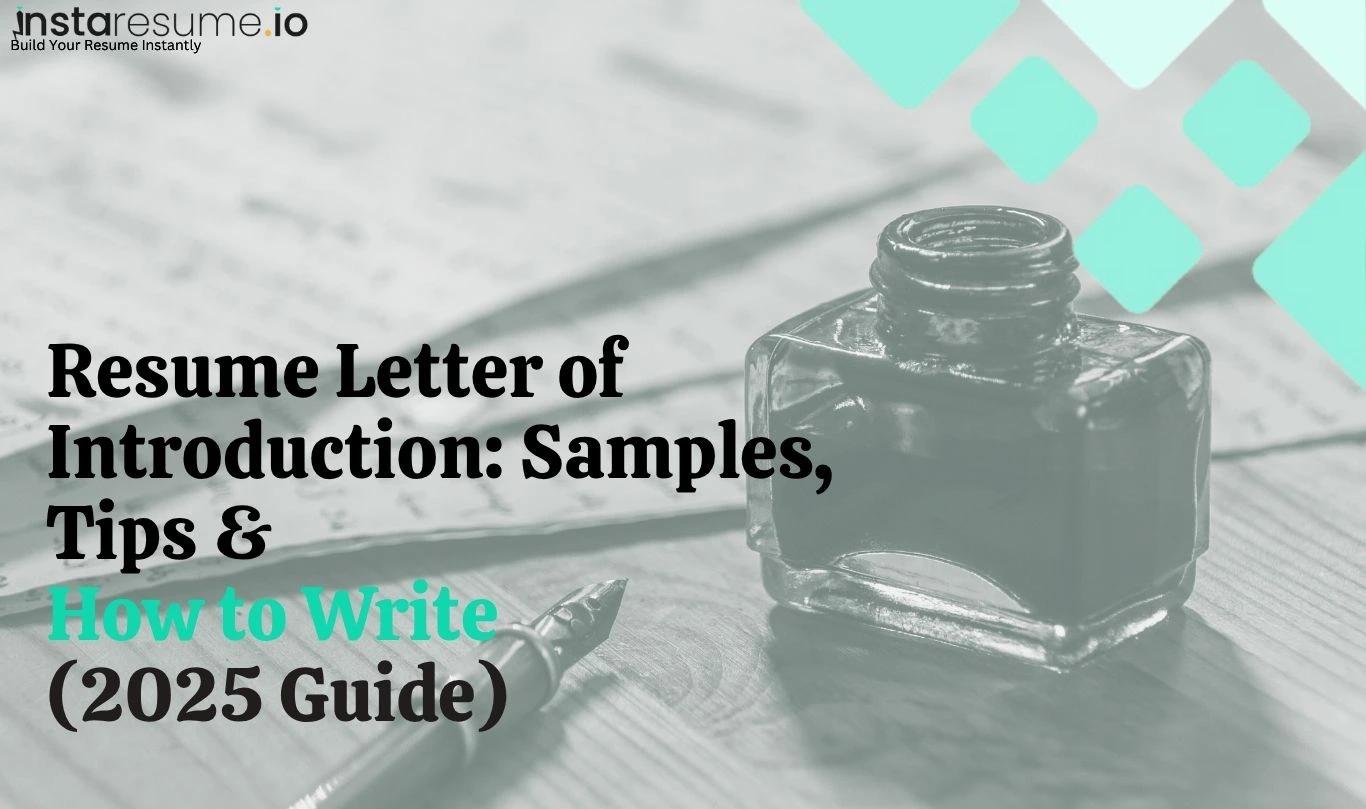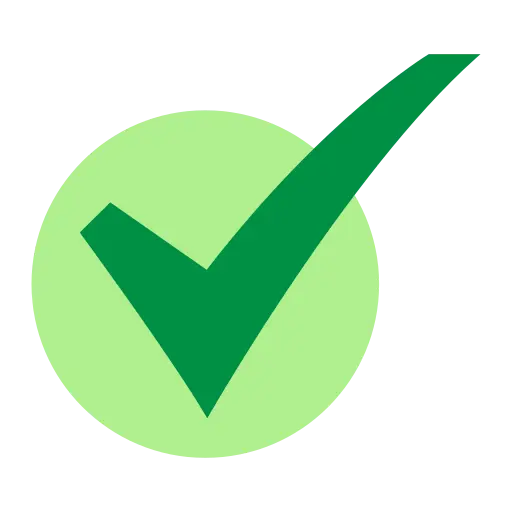Resume Letter of Introduction: Samples, Tips & How to Write (2025 Guide)
Trust Score: 4.8
351 reviews

Table of Contents
Introduction
In a world where job opportunities are often filled through referrals, networking, or internal recommendations before ever being posted online, a resume letter of introduction can be your most strategic career move. This simple yet impactful document acts as a personal handshake—introducing you to hiring managers, recruiters, or decision-makers and explaining why you’re worth their time and attention. Whether you're changing careers, entering the job market, or proactively reaching out to your dream company, a well-crafted introduction letter can set you apart long before your resume is reviewed.
So, what exactly is a letter of introduction? Unlike a traditional cover letter that responds to a posted job, this letter is typically sent uninvited. It's often used when someone has referred you for a role, or when you're trying to make a connection in hopes of future opportunities. It conveys your background, your professional strengths, and—most importantly—your intention to build a relationship or explore potential openings.
As job search trends continue to evolve in 2025, personal branding and intentional outreach have never been more important. Hiring teams value proactive candidates who can communicate professionally, clearly, and with purpose. A thoughtful letter of introduction can make all the difference, especially when written with clarity, conciseness, and a human touch.
In this comprehensive guide, we’ll show you exactly how to write a resume letter of introduction that gets noticed. You’ll learn when to use one, what to include, how it differs from a cover letter, and how to structure it effectively. Plus, we’ll share real-world samples, expert tips, and formatting strategies to help you make the right impression—whether you're reaching out via email, LinkedIn, or through a mutual contact.
Ask ChatGPT
What is a Resume Letter of Introduction?
A resume letter of introduction is a professional message used to introduce yourself to an employer, recruiter, or industry contact—often before a job has even been advertised. It’s typically sent along with your resume to express interest in an organization, request a conversation, or start a relationship that could lead to a job opportunity. Unlike applying through formal job portals, this approach is more personalized and proactive, and it allows your resume to be received with context and intention.
Purpose of a letter of introduction
The main goal of a letter of introduction is to open the door to a future opportunity or professional connection. It gives you space to:
 Share a brief summary of your background or skills
Share a brief summary of your background or skills Express admiration or interest in the company or individual
Express admiration or interest in the company or individual Explain why you're reaching out—even without a job listing
Explain why you're reaching out—even without a job listing Provide a warm and professional context for your attached resume
Provide a warm and professional context for your attached resume
Used correctly, this type of letter can generate valuable responses, whether that’s an interview, a referral, or even a recommendation to another department.
Letter of introduction vs. cover letter
Although both documents serve to introduce you professionally, a letter of introduction is more network-driven, while a cover letter is job-driven. A cover letter is tied to a specific job posting and typically aligns your qualifications directly to that role. A letter of introduction, on the other hand, is broader and more exploratory—it may not mention a particular job at all. It’s often written to someone you’ve been referred to, or someone in a company you admire, with the aim of building a connection for future possibilities.
Where a cover letter emphasizes why you're a match for a specific job, a letter of introduction focuses on who you are, how you're connected, and why you’re interested in starting a conversation.
When to use a letter of introduction
There are several ideal moments to use this letter:
 After being referred: If someone within a company refers you, it’s a great way to make a warm introduction.
After being referred: If someone within a company refers you, it’s a great way to make a warm introduction. During networking: Whether from events or LinkedIn conversations, this letter helps continue the discussion.
During networking: Whether from events or LinkedIn conversations, this letter helps continue the discussion. For speculative applications: When you're interested in a company but no job has been posted.
For speculative applications: When you're interested in a company but no job has been posted. As a student or recent graduate: Introducing yourself to organizations you'd like to intern or work with.
As a student or recent graduate: Introducing yourself to organizations you'd like to intern or work with.
In each of these cases, the letter acts as a bridge between your resume and a potential opportunity, even if that opportunity doesn’t exist yet on paper.
Who should write one and when
A letter of introduction is useful for a wide range of professionals, including:
 Job seekers hoping to get noticed outside of formal application channels
Job seekers hoping to get noticed outside of formal application channels Career changers who want to explain their transition and introduce new skills
Career changers who want to explain their transition and introduce new skills College students or recent graduates seeking internships, mentorships, or entry-level roles
College students or recent graduates seeking internships, mentorships, or entry-level roles Experienced professionals exploring leadership roles or industry shifts
Experienced professionals exploring leadership roles or industry shifts
You should consider writing one when you want to build a meaningful connection, especially when there's no clear job posting to apply to but you know you have value to offer. It’s also a strong follow-up after receiving a referral or meeting someone through a professional setting.
How to Write a Resume Letter of Introduction (With Tips and Samples)
Writing a resume letter of introduction requires a thoughtful and strategic approach. Unlike a cover letter that follows a strict structure and responds to a specific job listing, this letter should read like a professional conversation starter. Its goal is to express your interest, present your value, and build a genuine connection—without being too formal or overly detailed. Below is a step-by-step guide on how to write one effectively in 2025:
Start with a personalized greeting
Avoid generic openings like “To Whom It May Concern” or “Dear Sir/Madam.” Whenever possible, address your letter to a specific person—ideally a hiring manager, department lead, or someone in the company’s HR or talent acquisition team.
Tips:
 Check the company website or LinkedIn to find the name and title of the recipient.
Check the company website or LinkedIn to find the name and title of the recipient. Use “Dear [First Name] [Last Name]” or “Dear [Title] [Last Name]” depending on the formality of the company.
Use “Dear [First Name] [Last Name]” or “Dear [Title] [Last Name]” depending on the formality of the company. If you absolutely can’t find a name, use “Dear [Department] Team” or “Dear Hiring Manager” as a more personalized fallback.
If you absolutely can’t find a name, use “Dear [Department] Team” or “Dear Hiring Manager” as a more personalized fallback.
Craft a strong opening line
The first line of your letter sets the tone. Get straight to the point while showing professionalism and intent. Mention how you’re connected—whether through a referral, shared network, or interest in the company’s mission—and be clear about why you’re reaching out.
Examples:
 “I was recently referred to your team by [Referrer's Name], and I’m excited to introduce myself as a [your profession] with a strong interest in [relevant field].”
“I was recently referred to your team by [Referrer's Name], and I’m excited to introduce myself as a [your profession] with a strong interest in [relevant field].” “After following your company’s work in sustainable design, I felt compelled to reach out and share how my experience aligns with your mission.”
“After following your company’s work in sustainable design, I felt compelled to reach out and share how my experience aligns with your mission.”
Highlight your skills and value briefly
This section should not duplicate your resume but rather summarize the top 2–3 qualities or experiences that are most relevant to the company or industry. Keep it concise and impactful, focusing on how you can add value rather than what you want from the company.
Tips:
 Mention measurable achievements or notable roles.
Mention measurable achievements or notable roles. Align your message with the company’s goals or values.
Align your message with the company’s goals or values. Tailor your tone and language to the industry—more technical for STEM, more narrative for creative fields.
Tailor your tone and language to the industry—more technical for STEM, more narrative for creative fields.
Example:
“With five years of experience leading patient care teams in high-pressure ICU environments, I’ve developed strong clinical leadership and crisis management skills that I believe would support your hospital’s focus on high-quality patient outcomes.”
Keep the tone professional but approachable
While this is a formal communication, the letter should not feel rigid. Aim for a tone that’s confident, respectful, and conversational. Be human—especially if the letter is being sent via email or LinkedIn.
Guidelines:
 Avoid jargon or overly formal language.
Avoid jargon or overly formal language. Let your personality come through without being casual.
Let your personality come through without being casual. Adjust your tone based on the company’s culture. Startups may welcome a more informal tone; corporate environments may require a more structured approach.
Adjust your tone based on the company’s culture. Startups may welcome a more informal tone; corporate environments may require a more structured approach.
End with a clear call-to-action
Your closing should guide the reader toward the next step. Invite them to review your resume, express openness to a conversation, or thank them for their time and consideration.
Examples:
 “I’ve attached my resume below and would be happy to connect for a brief call if you'd like to discuss how I can contribute to your team.”
“I’ve attached my resume below and would be happy to connect for a brief call if you'd like to discuss how I can contribute to your team.” “Thank you for your time—I’d love to explore how I can support your work in the coming months.”
“Thank you for your time—I’d love to explore how I can support your work in the coming months.”
End with a professional closing line such as:
 “Sincerely,”
“Sincerely,” “Best regards,”
“Best regards,” “Warm wishes,”
“Warm wishes,”
Include your full name, email address, phone number, and LinkedIn profile if applicable.
Sample Letter of Introduction (2025 Version)
Here’s a modern example of a resume letter of introduction, written for email or LinkedIn message:
Subject: Introduction — Experienced ICU Nurse Interested in Future Opportunities at Carewell Hospital
Dear Ms. Kapoor,
I hope this message finds you well. I was recently referred to your team by Dr. Sanjay Mehra, who suggested I connect with you regarding future roles at Carewell Hospital. As an ICU nurse with over seven years of experience in high-acuity care, I’ve long admired the hospital’s reputation for clinical excellence and patient-centered innovation.
In my current role at City Health Services, I lead a team of five nurses in managing critical care operations, with a focus on improving response time and reducing readmissions. I’m passionate about optimizing emergency protocols and fostering team collaboration to deliver better patient outcomes—values I understand are deeply embedded in your organization’s mission.
I’ve attached my resume here and would love the opportunity to speak further or be considered for any future openings where my background may be a fit. Thank you for your time and consideration, and I look forward to staying in touch.
Warm regards,
Priya Sharma
[email protected]
(91) 99876 54321
LinkedIn: linkedin.com/in/priyasharma-nurse
Frequently Asked Questions
What is the difference between a resume and a letter of introduction?
A resume is a formal document that outlines your work history, education, skills, and achievements—essentially your career profile. A letter of introduction, on the other hand, is a written message that provides a personalized context for sending that resume. It introduces you to a specific person or company, explains why you’re reaching out, and invites the recipient to view your resume or consider your profile for future opportunities.
Should I use a letter of introduction when there’s no job posting?
Yes, absolutely. A letter of introduction is most effective when there isn’t a specific job opening. It allows you to proactively express interest in a company or department, share your resume, and potentially get ahead of the hiring cycle. Many organizations keep strong introductions on file and reach out when roles become available—especially if your skills are relevant and your approach is professional.
Can I send a letter of introduction via LinkedIn?
Yes, LinkedIn is one of the best platforms for sending brief, conversational letters of introduction. You can message recruiters, managers, or professionals within a company to introduce yourself and share your intent. While attachments aren’t always allowed in LinkedIn messages, you can include a link to your portfolio, LinkedIn profile, or mention that you’re happy to email your resume upon request.
How long should a letter of introduction be?
A letter of introduction should be short and to the point—ideally between 150 to 250 words. It should be long enough to convey your purpose, your key strengths, and a polite call to action, but short enough to respect the reader’s time. For email or LinkedIn messages, aim to keep it within five short paragraphs or fewer.
Is a letter of introduction useful for fresh graduates?
Yes, it’s especially useful for recent graduates who may not have extensive experience but want to build connections or explore entry-level roles. It allows you to highlight your academic background, internships, projects, and career interests while making a strong, proactive impression. Many employers value enthusiasm, clarity, and initiative in early-career professionals.
What should I avoid in a letter of introduction?
Avoid being too vague, overly formal, or making the message about what you want without showing what you offer. Common pitfalls include:
 Using generic greetings like “To Whom It May Concern”
Using generic greetings like “To Whom It May Concern” Writing too much or repeating your entire resume
Writing too much or repeating your entire resume Sounding too casual or too robotic
Sounding too casual or too robotic Forgetting to include a call-to-action
Forgetting to include a call-to-action Sending without proofreading for grammar or clarity
Sending without proofreading for grammar or clarity
Keep your tone respectful, purposeful, and authentic—and always customize it to the person or company you're contacting.






